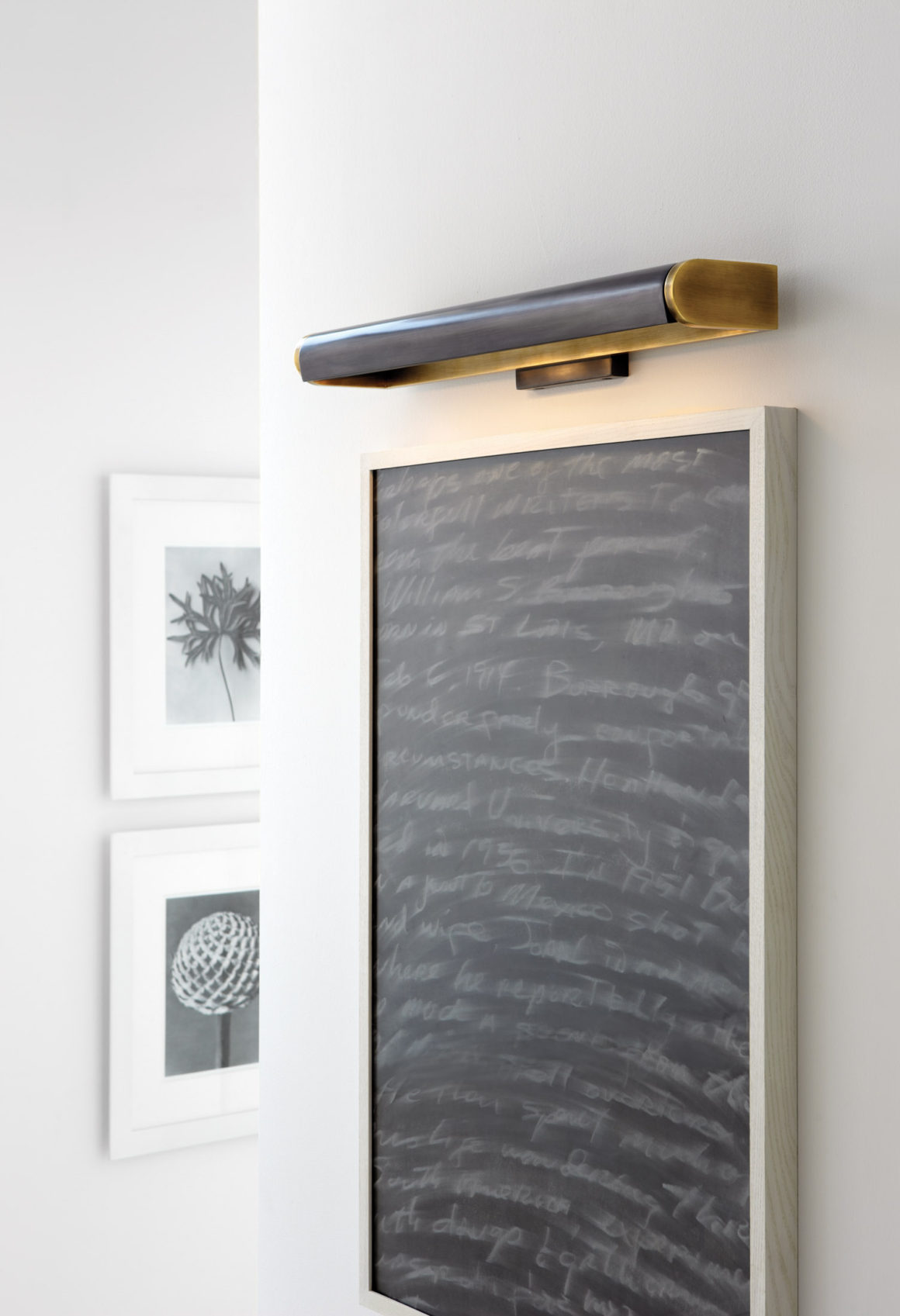
The right lighting in kitchens and bathrooms can boost comfort and beauty considerably. But with such a vast array of lighting options on the market, it can be difficult to choose the right pieces. We asked Glyn Austin, co-owner of Cocoon Furnishings in Oakville Ontario, to offer her advice on how to find pieces that will perfectly light up your kitchen, your bathroom …. and your heart.
Question: Glyn, what are the various kinds of lighting available for kitchens and bathrooms?
Answer: We divide lighting into four categories: ceiling, wall, table and floor. Kitchens generally require ceiling lighting in the form of chandeliers, pendants and recessed lighting. Bathrooms tend to have wall and ceiling lighting.
Q: Some of us have had the experience of bumping our heads on chandeliers suspended over dining tables. What is the advisable height for dining chandeliers and what rules should homeowners abide by when installing them?
A: There should be between 30 and 36 inches between the bottom of the light fixture and the surface of the table. That provides optimum viewing for those seated and no head-bumping. The fixture should also be six inches narrower than the width of a rectangular table to look proportional. In the case of a round table, choose a fixture with a width measuring between one-half and three-quarters of the table’s diameter.

Q: What advice do you have for anyone looking for powder room lighting?
A: Because powder rooms are small spaces, the lighting becomes a focus. Sconces flanking a mirror are an obvious choice. If space is tight, put a sconce or linear light above the mirror. A small chandelier can also be a delightful addition on a nine-foot ceiling. If the ceiling is eight feet, a decorative flush-mount fixture is a great solution.
Q: LED bulbs have been promoted for their environmental soundness. But their blueish colour is harsh. Is there a way to have ecologically sensitive lighting that casts a softer glow?
A: LED lights were originally a blueish colour because of the high Kelvin degree (K) rating, or base units used to determine the colour temperature. The original lights were 5,000K, which casts a blue white. Now we use 2,700 to 3,000K, which is a warmer colour without a blue cast. We still use 4,000K bulbs if we want a bright cool white, such as in commercial spaces. The new bulbs draw less energy (one-tenth of the energy of older ones) and have a lifespan of 12 to 15 years.

Q: What is the best kind of lighting for a bathroom?
A: In a main bathroom, the best lighting allows for personal grooming tasks.
Sconces flanking a mirror are ideal, particularly if they cast a good amount of natural light. I recommend warm white with a temperature of 2,700 to 3,000K. As task lighting, choose fixtures with white shades that are frosted or clear glass. Dimmers are great for controlling vanity lights. Small chandeliers or flush mounts over a tub create ambience as accent lighting. Lately I’ve been seeing picture lights over art on bathroom walls.

Q: What is the best kind of lighting for a kitchen?
A: A kitchen requires a balance of lighting for tasks: from meal prep and cooking to visiting with guests at the island to supervising homework and family dinners. Ambient or general lighting is the main source and is usually recessed. I like pot lights on dimmers to control the mood. Under-cabinet lighting is important as more focused light for food preparation and reading recipes. Over-cabinet lights, placed between cabinets and ceiling, were used in the past as picture lights but are now highlighting cabinet doors and architectural features.
Island lighting can be both task and accent in nature. Pendants are the general choice.
Down-lighting is preferred for such tasks as reading recipes or prepping food. A linear fixture over the island should be no longer than two-thirds the length of the island. Pendants can be lantern style, round, cylindrical, drum and linear, along with brass, silver, black, white, wicker, glass or any combination thereof. A chandelier is ideal over a kitchen table.

Q: The sconce is a delightfully old-fashioned style of lighting that has made a comeback. How and where should sconces be used to best effect?
A: Sconces can be used throughout the home: flanking a console table in an entrance, in hallways for a wash wall effect, to light stairways, and in dining rooms, where they can stand alone or flank a buffet. Some lighting collections include sconces and chandeliers for an effortless pairing. Sconces can also be installed beside a bed if space is too tight for a table lamp on a nightstand.

Q: Many of today’s lighting fixtures are designed with materials that have organic textures. What trends are you observing in this regard?
A: We are seeing organic trends everywhere. In lighting, this includes the use of wicker, rattan, hammered metals, textured plaster and concrete. •
Originally published in the Toronto 2020 Spring issue.
Cocoon Furnishings
2695 Bristol Cir., Unit #2
Oakville, Ont.
905-829-2780
www.cocoonfurnishings.ca








